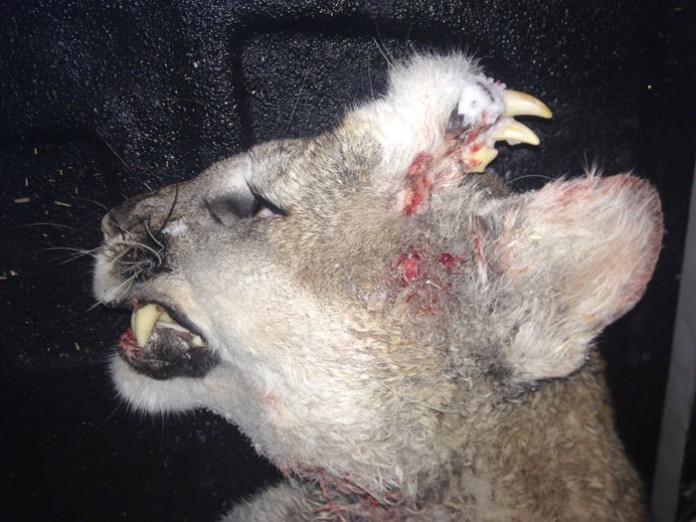PRESTON, Idaho, Jan. 8, 2016 (Nate Sunderland/EastIdahoNews.com) — An abnormal growth of teeth, hair and whiskers on the forehead of a yearling mountain lion has some local biologists intrigued and others skeptical, according to EastIdahoNews.com.
“A hunter brought it in, and there was something extra,” Idaho Fish and Game Region 5 spokeswoman Jennifer Jackson told EastIdahoNews.com. “We haven’t seen anything like this in our region.”
The young female was killed Dec. 30 in Franklin County, about 8 miles southwest of Preston, by an Idaho hunter. In keeping with state law, the hunter brought his kill to IDFG to be checked. IDFG officers are required to remove a tooth from harvested mountain lions to gather data on their ages, Jackson said.
“In the process of harvesting the animal we had an officer check it, and we determined something really interesting was going on,” Jackson said.
The Preston conservation officer described the abnormality as a growth of muscle and dense tissue with several teeth, hair and whiskers growing out of it. He photographed the animal, and the hunter took the carcass home, apparently to be taken to a taxidermist, Jackson said.
EastIdahoNews.com sent the photo to several biologists at east Idaho universities who suggested the photo might be a fake. However, IDFG officials confirmed the animal had been physically handled and examined by the conservation officer.
But the animal was not examined by veterinarians or biologists. Regional IDFG biologists said it’s impossible to determine the exact cause of the deformity based solely on visual observations of a photo.
But the biologists do have some theories.
Jackson said the mass of teeth, hair and whiskers could be a conjoined twin that stopped developing and embedded itself on the lion while in the womb.
Another theory, which officials say is more likely, is that the growth is a teratoma — a rare tumor that contains extremities like teeth and hair.
EastIdahoNews.com reached out to the Wildlife Health Forensic Laboratory in Boise for more information about the condition.
The state wildlife veterinarian was unavailable, but laboratory staffers told EastIdahoNews.com that when animals are developing in utero, an identical twin can fuse to a body and create a mass of cells. That mass of cells — the teratoma — can sometimes develop teeth, hair, bone and skin. As animals get older, the mass typically gets larger.
Biologists are attempting to contact the hunter so they can take a closer look at the carcass.
“Our biologists didn’t get to examine it, and we’re interested in looking at this one a bit closer,” Jackson said.






